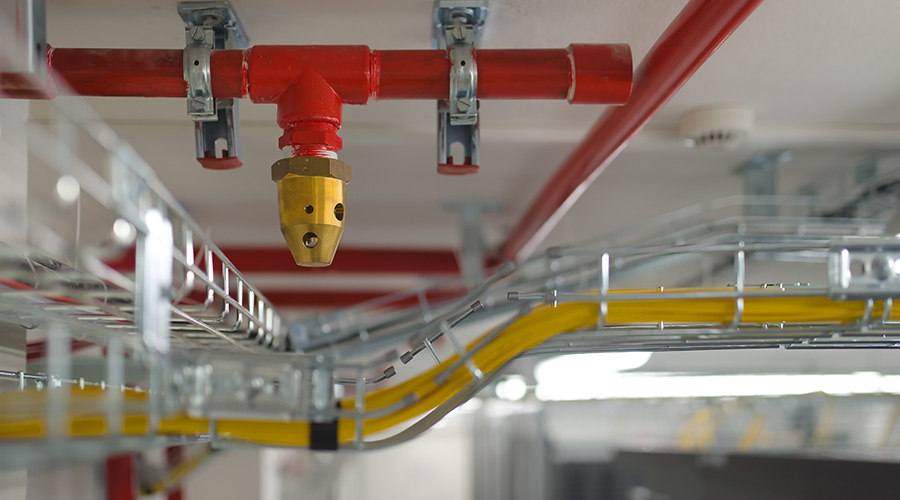Fire Prevention Starts with Proper Installation, Use and Maintenance
Fire hazards can quickly escalate if systems are not tested and maintained
By Amy Wunderlin, Contributing Writer
OTHER PARTS OF THIS ARTICLEPt. 1: 4 Common Fire HazardsPt. 2: This Page
Once you have identified the possible fire hazards at your facility, managers are ready to put preventive measures in place. There are several fire protection systems managers should consider to prevent the spread of fire and aid in emergencies. These systems are integral in modern facilities but only if they are in working order.
Fire hazards can quickly escalate if these systems are not tested and maintained, records are not kept up to date and system effectiveness lapses.
Fire protection equipment, such as smoke alarms, detectors, sprinklers and lights, are the first systems in place to prevent a fire from getting out of control. Many of these systems automatically activate without intervention to extinguish a fire before it spreads.
Other important equipment that helps protect building occupants includes extinguishers, emergency lights and signs and fire doors. Managers must ensure all employees know where this equipment is located and how to use it.
“Proper exit lighting plays a critical role in fire safety for several reasons,” says Marks. “During a fire emergency, visibility is often compromised due to smoke and darkness. Exit lighting serves as a crucial visual guide, offering clear and illuminated directions for individuals attempting to evacuate.
“By providing a visible path to exits, exit lighting enhances the efficiency of evacuation efforts, ensuring that occupants can navigate safely through potentially hazardous conditions and reach designated escape routes in a timely manner,” she adds.
Maintaining good inspection records of these systems and equipment ensures it is all in working order if or when it is needed. According to Marks, to best maintain these records managers should keep up to date with Chapter 7 of NFPA 72, The Fire Alarm and Signaling Code, which outlines crucial documentation requirements for fire alarm and signaling systems.
“These records specify what documents are necessary, the frequency of updates, and the duration for which they should be retained,” she explains. “This information serves as a vital resource for facility owners, offering insights into the status of the fire alarm system.”
Marks adds that these records can also be instrumental for insurance purposes, allowing companies to verify that proper care and maintenance were undertaken.
“Robust inspection records facilitate effective system management and provide a documented history that can be invaluable for owners and insurers,” she says.
Amy Wunderlin is a freelance writer based in Fort Atkinson, Wisconsin.
Continue Reading: Fire Safety
 4 Common Fire Hazards
4 Common Fire Hazards
 Fire Prevention Starts with Proper Installation, Use and Maintenance
Fire Prevention Starts with Proper Installation, Use and Maintenance
Related Topics:













